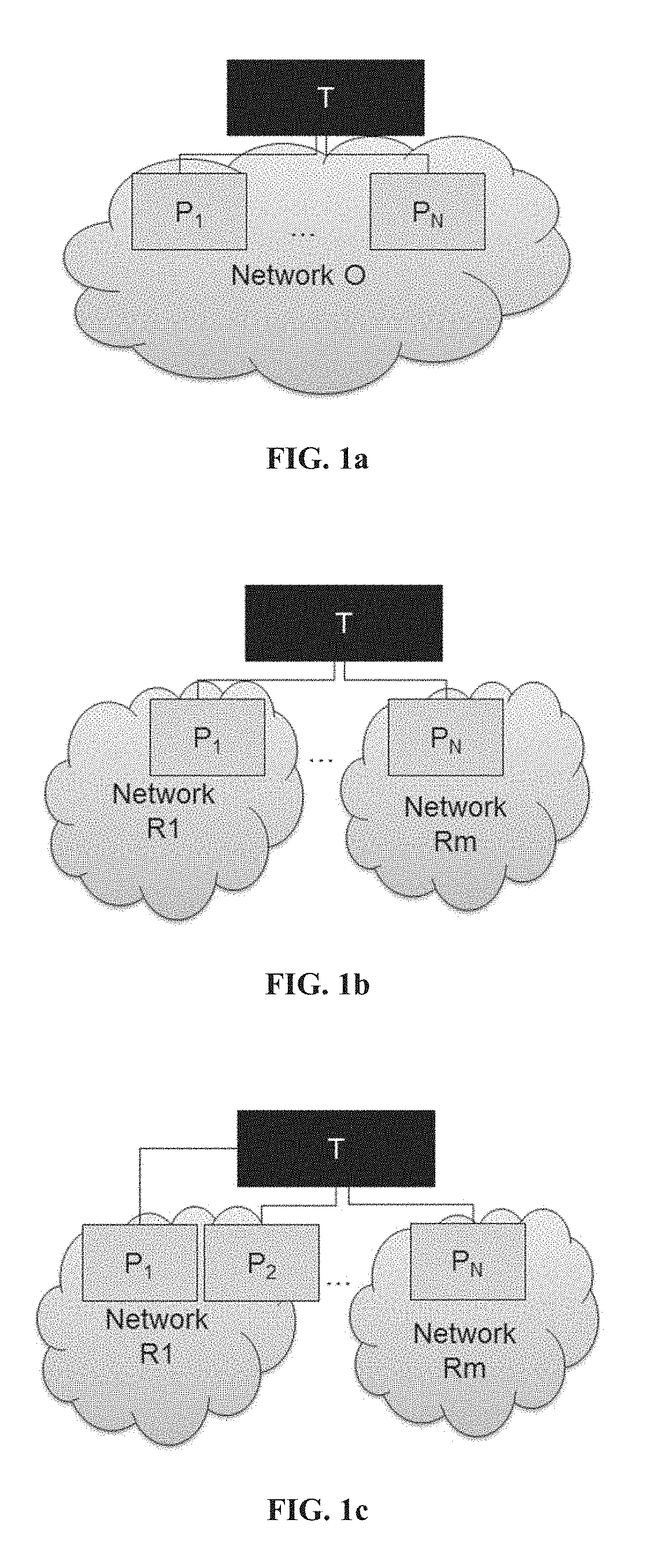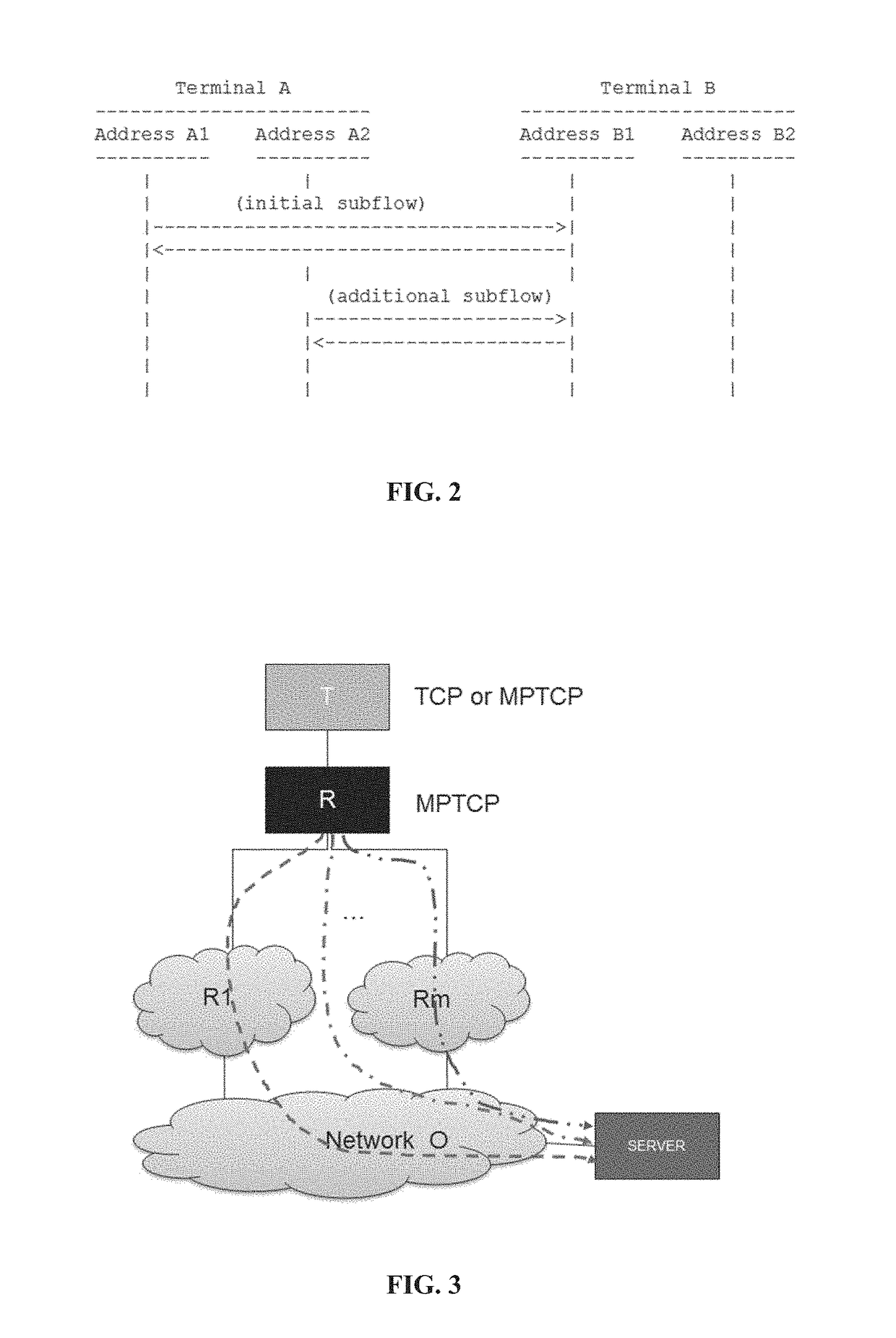Method for selecting network connection concentrators
a network connection and concentrator technology, applied in the field of telecoms, can solve problems such as unstable “mif” characteristic, device not knowing a priori, and problems of various kinds, and achieve the effect of increasing the capacity of the network and avoiding degradation of the quality of the connection
- Summary
- Abstract
- Description
- Claims
- Application Information
AI Technical Summary
Benefits of technology
Problems solved by technology
Method used
Image
Examples
Embodiment Construction
[0081]The invention relates to a given set of M≧1 communication paths usable by a communicating device, each respective interface of the communicating device being connected to a respective path. This set may comprise all of the paths known to the communicating device, or else only some of them.
[0082]The invention applies in general manner to any protocol governing multipath IP connections. There follows a description of the invention applied to the MPTCP protocol, after a few reminders about certain properties of this protocol.
[0083]Firstly, it should be recalled that the transmission control protocol (TCP) as defined in particular in specification RFC 793 of the Internet Engineering Task Force (IETF) is one of the main protocols used by terminals connected to an IP network (e.g. the Internet), such that the literature often refers to the “TCP / IP” suite of protocols. The TCP protocol serves to convey a stream of digital data in reliable, ordered, and error-free manner between appli...
PUM
 Login to View More
Login to View More Abstract
Description
Claims
Application Information
 Login to View More
Login to View More - R&D
- Intellectual Property
- Life Sciences
- Materials
- Tech Scout
- Unparalleled Data Quality
- Higher Quality Content
- 60% Fewer Hallucinations
Browse by: Latest US Patents, China's latest patents, Technical Efficacy Thesaurus, Application Domain, Technology Topic, Popular Technical Reports.
© 2025 PatSnap. All rights reserved.Legal|Privacy policy|Modern Slavery Act Transparency Statement|Sitemap|About US| Contact US: help@patsnap.com



